A Reminder of Santa Barbara’s Remarkable Journey from Disaster to Architectural Triumph
This is our second of three posts describing downtown Santa Barbara’s landmarks . Our first post can be found here. Our journey begins at the Santa Barbara Presidio, a military outpost established in 1782 by the Spanish to defend the coast and protect the nearby Mission Santa Barbara. Today, the Presidio stands as a state historic park, offering visitors a window into California’s colonial era. The adobe buildings and reconstructed fortifications provide a tangible link to Santa Barbara’s Spanish roots, showcasing the architectural style that would later influence the city’s iconic look.
The Santa Barbara Presidio: A Spanish Legacy
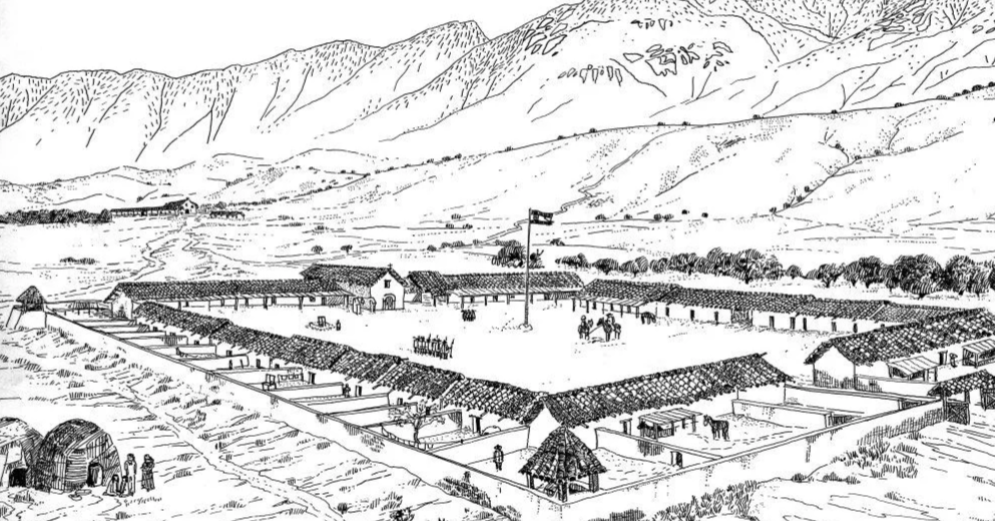
Santa Barbara Historical Museum: Preserving the Past
Just a short walk from the Presidio, the Santa Barbara Historical Museum serves as a treasure trove of local history. Housing over 80,000 artifacts and photographs, the museum offers a comprehensive look at Santa Barbara’s evolution from a small Spanish settlement to a thriving American city. Exhibits highlight the Chumash people, the Spanish and Mexican periods, and the city’s development in the 19th and 20th centuries. Below is a 360 degree photo of the Casa Covarrubias historic adobe at the Museum that is dressed up for a wedding.
The 1925 Earthquake: A Catalyst for Change
As we make our way towards the 101 freeway, we encounter numerous buildings that bear witness to one of the most significant events in Santa Barbara’s history: the 1925 earthquake. On June 29, 1925, a powerful 6.8 magnitude earthquake struck the city, causing widespread destruction and forever altering Santa Barbara’s architectural landscape.
The earthquake leveled much of the downtown area, destroying over 70% of the commercial buildings in the city. However, from this devastation arose an opportunity for rebirth. The city’s leaders, led by Pearl Chase and the Plans and Planting Committee, saw a chance to reimagine Santa Barbara’s urban design.
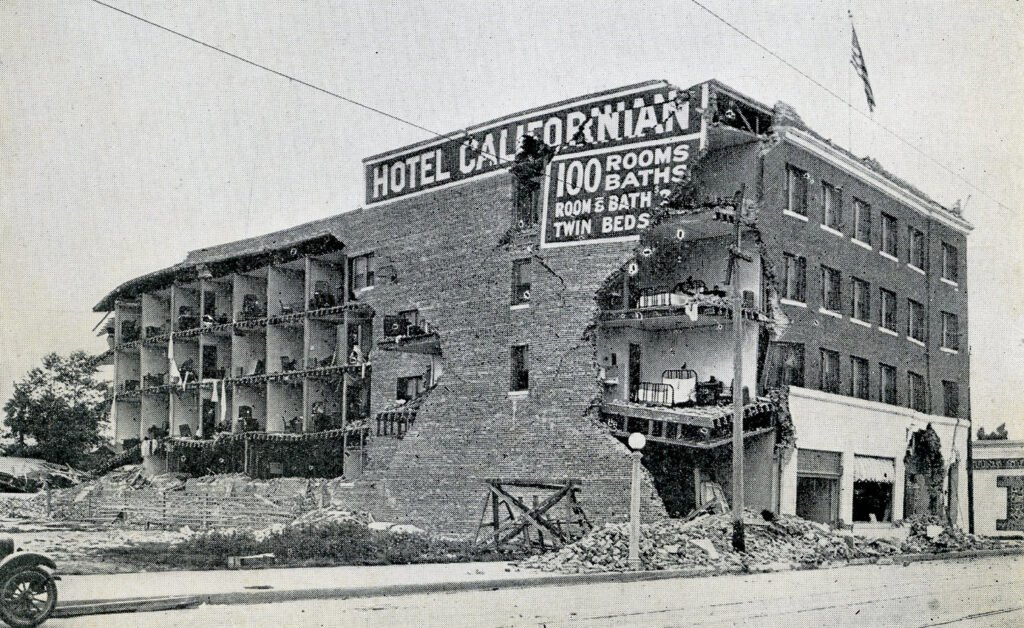
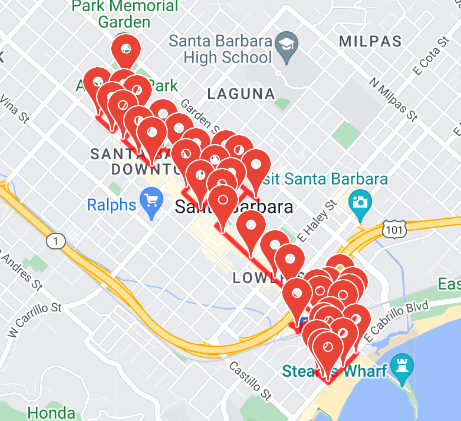
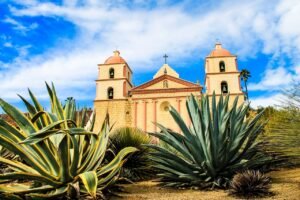
Our Self-Guided GPS Audio Tour
Our tour is designed to take you to the most interesting and unique places in Santa Barbara, all while providing you with informative and entertaining commentary via our easy-to-use app.
FOR A LIMITED TIME ONLY $8.49
(Regular Price $9.99)
Use Discount Code SUMMER24
The Birth of Spanish Colonial Revival
In the aftermath of the earthquake, Santa Barbara embraced a unified architectural style known as Spanish Colonial Revival. This decision was influenced by the city’s Spanish heritage and the desire to create a cohesive, aesthetically pleasing urban environment. The style, characterized by white stucco walls, red tile roofs, and ornate ironwork, became the defining look of Santa Barbara.
Key buildings constructed or reconstructed in this style include the Santa Barbara County Courthouse, often hailed as one of the most beautiful public buildings in America, and the restored El Paseo complex, which showcases the intricate details of Spanish Colonial Revival architecture.
A Walk Through Transformed Streets
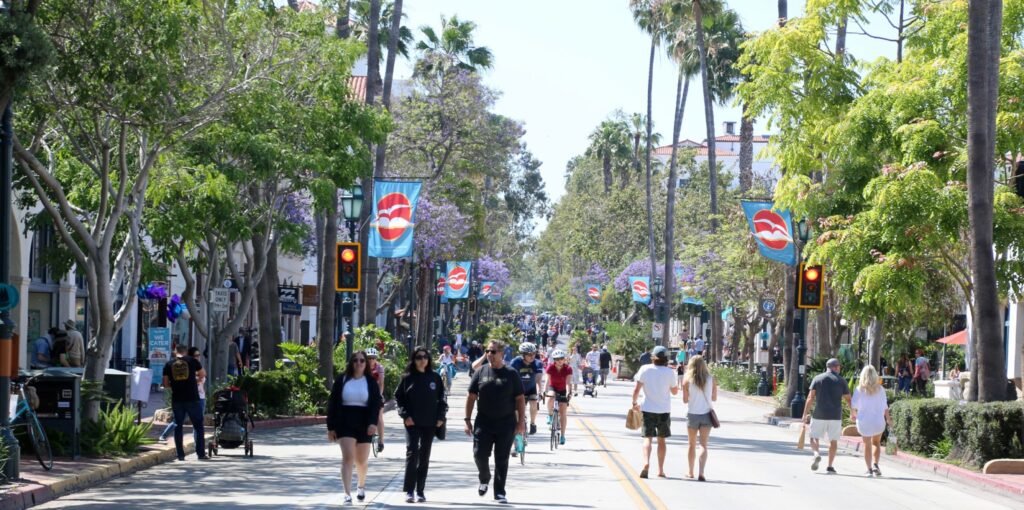
As we continue our journey towards the 101 freeway, we encounter numerous examples of this architectural renaissance. The streets are lined with buildings featuring arched doorways, wrought-iron balconies, and colorful tiles – all hallmarks of the Spanish Colonial Revival style. This unified approach to rebuilding gave Santa Barbara its distinctive charm and earned it the nickname “The American Riviera.
Legacy of the 1925 Earthquake
The 1925 earthquake, while devastating, ultimately led to the creation of the Santa Barbara we know today. The city’s commitment to preserving its Spanish heritage while embracing modern urban planning principles resulted in a unique and beautiful cityscape. This transformation extended beyond aesthetics, influencing building codes and earthquake preparedness measures that continue to shape the city’s development.
As we reach the 101 freeway, we can reflect on the journey we’ve taken through Santa Barbara’s history. From the Spanish colonial era represented by the Presidio to the architectural rebirth following the 1925 earthquake, this area encapsulates the city’s resilience and ability to reinvent itself while honoring its past.
Santa Barbara’s transformation in the wake of the 1925 earthquake stands as a testament to the power of community vision and the enduring influence of thoughtful urban planning. As we admire the beautiful Spanish Colonial Revival buildings that line the streets, we’re reminded of the city’s remarkable journey from disaster to architectural triumph.
